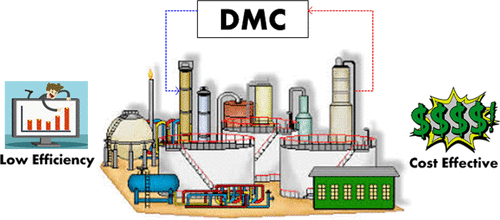当前位置:
X-MOL 学术
›
Ind. Eng. Chem. Res.
›
论文详情
Our official English website, www.x-mol.net, welcomes your
feedback! (Note: you will need to create a separate account there.)
Advanced Process Control for Cost-Effective Glycol Loss Minimization in a Natural Gas Dehydration Plant under Upset Conditions
Industrial & Engineering Chemistry Research ( IF 3.8 ) Pub Date : 2020-03-22 , DOI: 10.1021/acs.iecr.9b06449 Md Emdadul Haque 1 , Srinivas Palanki 1 , Qiang Xu 1
Industrial & Engineering Chemistry Research ( IF 3.8 ) Pub Date : 2020-03-22 , DOI: 10.1021/acs.iecr.9b06449 Md Emdadul Haque 1 , Srinivas Palanki 1 , Qiang Xu 1
Affiliation

|
The monoethylene glycol (MEG)-based natural gas (NG) dehydration process often faces significant glycol losses at the stripper column because of vaporization and poor NG liquid recovery because of the inefficient refrigeration system. A proportional integral derivative (PID)-based regulatory control strategy can partially mitigate this problem under certain upset conditions. However, to run the plant more efficiently and economically, it is necessary to apply advanced control technologies to reduce MEG losses. Although there are several examples of industrial implementation of advanced process control technologies in the refining industry, there are very few realistic examples that demonstrate the advantages of modern control technology in NG production. In this study, a plant-wide dynamic simulation model for an NG dehydration plant is developed and examined. A hierarchical control system comprising dynamic matrix control (DMC) and basic regulatory control loops is constructed to optimize the plant operation in terms of reducing MEG losses and minimize the operating costs with ensured product qualities under various process upsets. Both standard DMC and adaptive DMC controller models are developed based on the subspace identification model in the Aspen manufacturing platform. Although adaptive DMC performs a little better than the standard DMC, both controller models are very robust and can handle ±25% feed and 31% chiller temperature disturbances and demonstrate significant improvement over traditional PID control methodology.
中文翻译:

先进的过程控制,可在天然气脱水工厂中在颠簸条件下将成本效益降低的乙二醇损失降至最低
基于单乙二醇(MEG)的天然气(NG)脱水过程通常会因汽化而在汽提塔面临大量乙二醇损失,并且由于制冷系统效率低下而导致NG液体回收率低。基于比例积分微分(PID)的监管控制策略可以在某些不正常的情况下部分缓解此问题。但是,为了更高效,更经济地运行该工厂,有必要应用先进的控制技术来减少MEG损失。尽管在炼油行业中有许多工业实施先进过程控制技术的例子,但很少有现实的例子能够证明现代控制技术在天然气生产中的优势。在这个研究中,开发并检查了NG脱水厂的全厂动态仿真模型。构建了包括动态矩阵控制(DMC)和基本调节控制回路的分层控制系统,以在减少MEG损失的方面优化工厂运营,并在确保各种过程不正常情况下确保产品质量的前提下将运营成本降至最低。标准DMC和自适应DMC控制器模型都是基于Aspen制造平台中的子空间识别模型开发的。尽管自适应DMC的性能比标准DMC稍好,但两种控制器模型都非常强大,可以处理±25%的进料和31%的冷却器温度干扰,并显示出优于传统PID控制方法的显着改进。构建了包括动态矩阵控制(DMC)和基本调节控制回路的分层控制系统,以在降低MEG损失的方面优化工厂运营,并在确保各种过程不正常情况下确保产品质量的前提下将运营成本降至最低。标准DMC和自适应DMC控制器模型都是基于Aspen制造平台中的子空间识别模型开发的。尽管自适应DMC的性能比标准DMC稍好,但两种控制器模型都非常强大,可以处理±25%的进料和31%的冷却器温度干扰,并显示出优于传统PID控制方法的显着改进。构建了包括动态矩阵控制(DMC)和基本调节控制回路的分层控制系统,以在减少MEG损失的方面优化工厂运营,并在确保各种过程不正常情况下确保产品质量的前提下将运营成本降至最低。标准DMC和自适应DMC控制器模型都是基于Aspen制造平台中的子空间识别模型开发的。尽管自适应DMC的性能比标准DMC好一些,但两种控制器模型都非常强大,可以处理±25%的进料和31%的冷却器温度干扰,并显示出优于传统PID控制方法的显着改进。
更新日期:2020-04-24
中文翻译:

先进的过程控制,可在天然气脱水工厂中在颠簸条件下将成本效益降低的乙二醇损失降至最低
基于单乙二醇(MEG)的天然气(NG)脱水过程通常会因汽化而在汽提塔面临大量乙二醇损失,并且由于制冷系统效率低下而导致NG液体回收率低。基于比例积分微分(PID)的监管控制策略可以在某些不正常的情况下部分缓解此问题。但是,为了更高效,更经济地运行该工厂,有必要应用先进的控制技术来减少MEG损失。尽管在炼油行业中有许多工业实施先进过程控制技术的例子,但很少有现实的例子能够证明现代控制技术在天然气生产中的优势。在这个研究中,开发并检查了NG脱水厂的全厂动态仿真模型。构建了包括动态矩阵控制(DMC)和基本调节控制回路的分层控制系统,以在减少MEG损失的方面优化工厂运营,并在确保各种过程不正常情况下确保产品质量的前提下将运营成本降至最低。标准DMC和自适应DMC控制器模型都是基于Aspen制造平台中的子空间识别模型开发的。尽管自适应DMC的性能比标准DMC稍好,但两种控制器模型都非常强大,可以处理±25%的进料和31%的冷却器温度干扰,并显示出优于传统PID控制方法的显着改进。构建了包括动态矩阵控制(DMC)和基本调节控制回路的分层控制系统,以在降低MEG损失的方面优化工厂运营,并在确保各种过程不正常情况下确保产品质量的前提下将运营成本降至最低。标准DMC和自适应DMC控制器模型都是基于Aspen制造平台中的子空间识别模型开发的。尽管自适应DMC的性能比标准DMC稍好,但两种控制器模型都非常强大,可以处理±25%的进料和31%的冷却器温度干扰,并显示出优于传统PID控制方法的显着改进。构建了包括动态矩阵控制(DMC)和基本调节控制回路的分层控制系统,以在减少MEG损失的方面优化工厂运营,并在确保各种过程不正常情况下确保产品质量的前提下将运营成本降至最低。标准DMC和自适应DMC控制器模型都是基于Aspen制造平台中的子空间识别模型开发的。尽管自适应DMC的性能比标准DMC好一些,但两种控制器模型都非常强大,可以处理±25%的进料和31%的冷却器温度干扰,并显示出优于传统PID控制方法的显着改进。











































 京公网安备 11010802027423号
京公网安备 11010802027423号